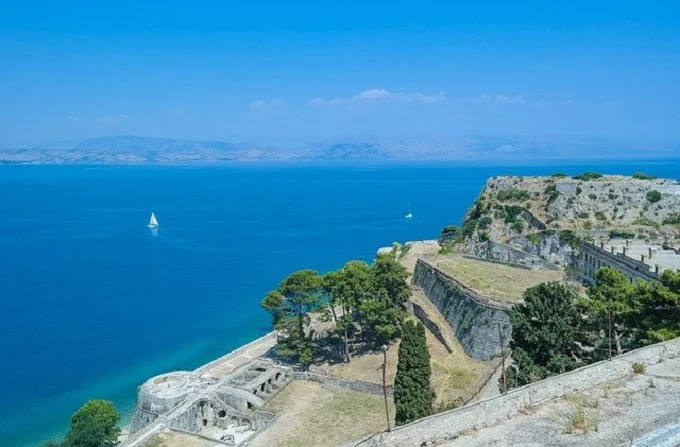The picturesque island of Corfu, which belongs to Greece, is very different from most of the Mediterranean.
The nature here is often not too lush, and around a yellow-brown color scheme with rare splashes of greenery prevails, but just not in Corfu. The island is buried in flowers, trees, and shrubs, and almost everyone who has visited it falls in love.
Facts about Corfu
1. The island of Corfu, or, as the Greeks call it, Kerkyra, is of great importance to the entire Greek culture. Brave travelers hid here after the fleece’s abduction in the famous legend about the Argonauts who sailed to Colchis (that is, to Georgia) for the Golden Fleece.
2. One of the national heroes in Corfu is the Russian admiral Fyodor Ushakov, a famous naval commander, who in his entire career, has not lost a single battle and has not lost a single ship. It was he who, in 1799, liberated the primordial Greek island from the French occupation, and the locals did not forget this. Every year the days of memory of the Holy Righteous Warrior Fyodor Ushakov are held here.
3. Corfu is only a few kilometers away from the coast of Albania. As a result, locals often go on vacation to Albania because there are good resorts there, which are several times cheaper than Corfu itself. So even locals find it more profitable to spend a weekend on Albanian beaches rather than their own.
4. Corfu is small, only 585 km², almost the same as the area of Phuket, the largest of the islands in Thailand.
5. For four centuries, the island of Corfu was owned by Venice, which was then an independent state. The fortifications they built did a good job: the Ottoman Empire captured mainland Greece, but the Turks could not take Corfu. They tried to capture it many times, the island was repeatedly ravaged, but the fortress never surrendered. This was especially important for Europeans since, in that era, Corfu was considered something of the most western stronghold of European culture, opposing the Ottoman Empire.
6. The island is famous for its kumquats, citrus fruits like very miniature tangerines. The homeland of the kumquats is China, but outside of it, these fruits have not taken root almost anywhere except Corfu. And here, they have grown so much that they have become one of the island’s symbols. Another symbol is the olive tree – about 40 times more than the inhabitants, nearly 4 million pieces.
7. Singing is popular among the locals. You will not see this in other regions of the country, but here it is easy – a man walks down the street and sings for himself.
8. The filming of one of the parts of Bond, the film For Your Eyes Only, took place mainly in Corfu.
9. Italy can be reached from here by ferry in a few hours. In cloudless weather, the Italian coastline can be seen on the horizon even without binoculars
10. The dialect spoken by the locals differs from the classical Greek language, as it contains a huge number of borrowings from Venetian, one of the dialects of Italian. In everyday life, the Venetian language in Corfu was used until the second half of the last century.
11. It was here that the first opera in Greece was once built. True, the island did not belong to Greece at the construction time, and the Venetians constructed the opera here. Unfortunately, the ancient building was severely damaged during the fighting during the Second World War.
12. Geographically, Corfu is part of the Ionian Archipelago, being the second largest island in its composition. In the 19th century, there was such a country as the Ionian Republic, a protectorate (practically a colony) of Great Britain. After Greece took shape as a single state, the Ionian Republic became part of it. This, by the way, is the only part of Greece that has never been under the control of the Ottoman Empire.
13. Locals sometimes refer to the waters surrounding Corfu as the “blue cemetery.” The fact is that during the First World War, it was here that the Serbian army retreated when Serbia was wholly occupied. Many of the evacuated soldiers died here from wounds and diseases and were subsequently buried at sea, where now there is a monument to the Greeks from grateful Serbs.
